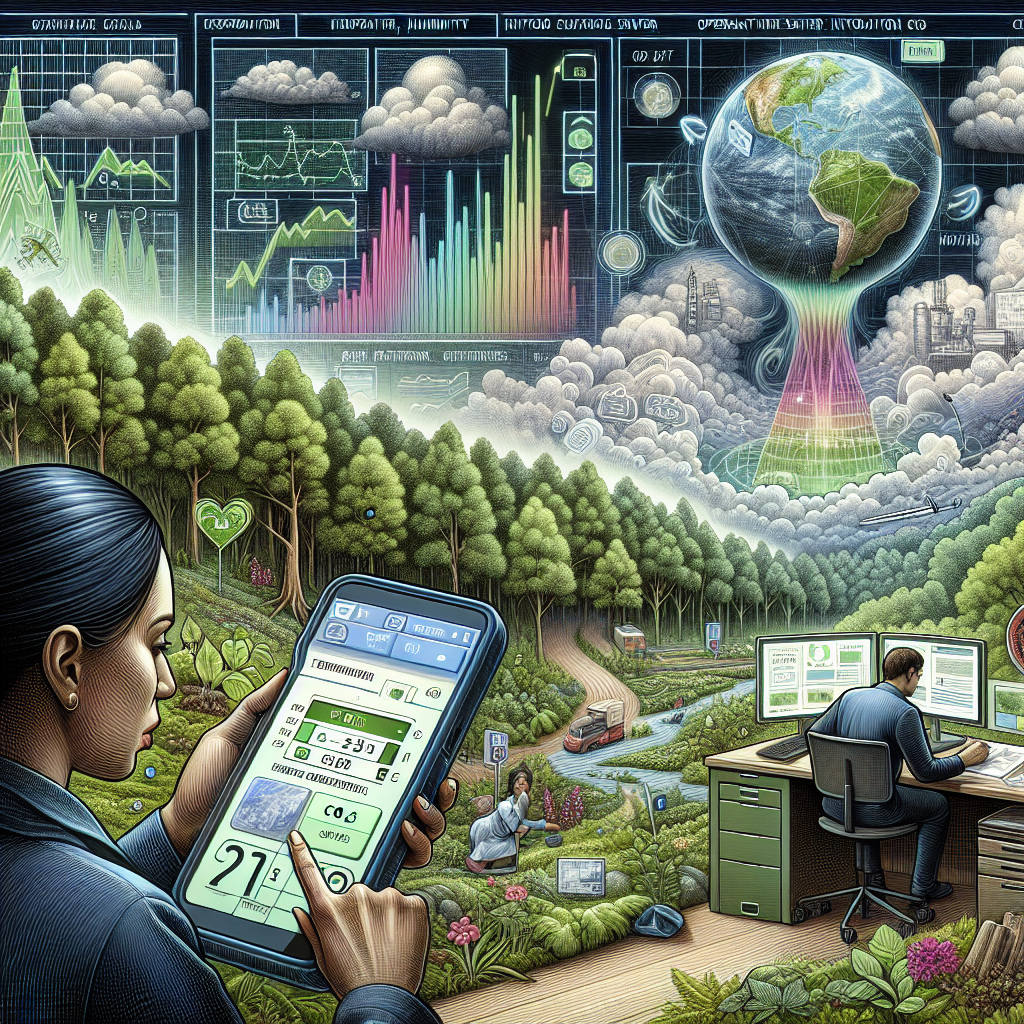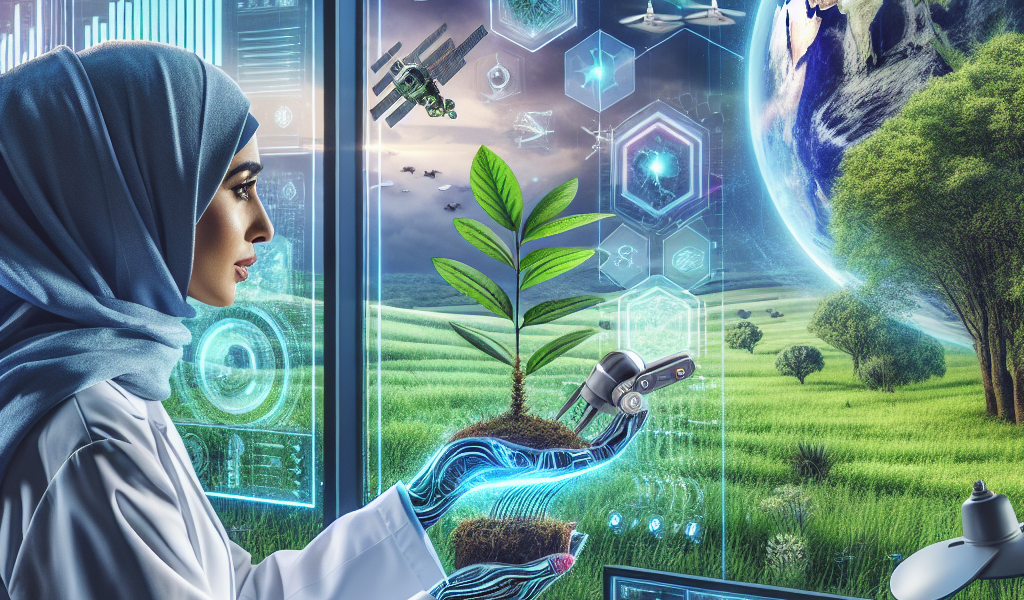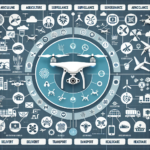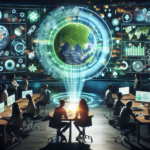-
Table of Contents
“Empowering a Greener Future: Tech Innovations in Environmental Monitoring”
Introduction

Advancements in technology are revolutionizing the field of environmental monitoring, providing unprecedented capabilities to track, analyze, and respond to ecological changes. Cutting-edge innovations such as remote sensing, Internet of Things (IoT) devices, and artificial intelligence (AI) are enabling more precise and comprehensive data collection. These technologies facilitate real-time monitoring of air and water quality, deforestation, wildlife populations, and climate patterns. By leveraging big data analytics and machine learning, scientists and policymakers can predict environmental trends, identify potential threats, and implement effective conservation strategies. This integration of technology not only enhances our understanding of the natural world but also empowers proactive measures to protect and sustain the environment for future generations.
Advanced Sensor Technologies for Real-Time Environmental Data Collection
In an era where environmental concerns are at the forefront of global discourse, the role of technology in monitoring and protecting our planet has never been more critical. Advanced sensor technologies are revolutionizing the way we collect real-time environmental data, offering unprecedented insights into the health of our ecosystems. These innovations are not only enhancing our understanding of environmental changes but also empowering communities and policymakers to make informed decisions.
One of the most significant advancements in this field is the development of sophisticated sensors capable of detecting minute changes in environmental conditions. These sensors, often deployed in remote and hard-to-reach areas, provide continuous data streams that are crucial for monitoring air and water quality, soil health, and biodiversity. For instance, air quality sensors can measure pollutants such as carbon dioxide, nitrogen oxides, and particulate matter, offering real-time data that can be used to issue health advisories and implement pollution control measures.
Moreover, the integration of Internet of Things (IoT) technology with environmental sensors has further amplified their capabilities. IoT-enabled sensors can communicate with each other and with central data hubs, creating a network of interconnected devices that provide a comprehensive picture of environmental conditions. This interconnectedness allows for the seamless collection and analysis of vast amounts of data, facilitating more accurate and timely responses to environmental threats.
Transitioning from air to water, advanced sensor technologies are also making waves in aquatic monitoring. Water quality sensors, for example, can detect contaminants such as heavy metals, pesticides, and pathogens in real-time. These sensors are often deployed in rivers, lakes, and oceans, where they continuously monitor water conditions and alert authorities to potential hazards. This real-time data is invaluable for protecting aquatic ecosystems and ensuring the safety of drinking water supplies.
In addition to air and water quality, soil health is another critical area where advanced sensors are making a difference. Soil sensors can measure parameters such as moisture levels, nutrient content, and pH, providing farmers and land managers with the information they need to optimize crop yields and maintain soil health. By enabling precision agriculture, these sensors help reduce the use of fertilizers and pesticides, thereby minimizing their environmental impact.
Furthermore, the advent of satellite-based remote sensing technologies has expanded the scope of environmental monitoring to a global scale. Satellites equipped with advanced sensors can monitor deforestation, track wildlife populations, and assess the impacts of climate change on a planetary level. This bird’s-eye view of the Earth allows scientists to observe large-scale environmental trends and develop strategies to mitigate their effects.
While the technological advancements in environmental monitoring are impressive, it is essential to recognize the human element behind these innovations. Researchers, engineers, and environmentalists are working tirelessly to develop and deploy these technologies, driven by a shared commitment to safeguarding our planet. Their efforts are supported by governments, non-profits, and private sector organizations that recognize the importance of investing in environmental monitoring.
In conclusion, advanced sensor technologies are transforming the way we collect and analyze environmental data, providing real-time insights that are crucial for protecting our planet. From air and water quality to soil health and global satellite monitoring, these innovations are empowering us to make informed decisions and take proactive measures to address environmental challenges. As we continue to harness the power of technology, we must remain committed to supporting the individuals and organizations dedicated to preserving the health of our ecosystems for future generations.
The Role of Artificial Intelligence in Predicting Environmental Changes
In recent years, the role of artificial intelligence (AI) in predicting environmental changes has become increasingly significant. As the world grapples with the escalating impacts of climate change, the need for accurate and timely environmental monitoring has never been more critical. AI, with its ability to process vast amounts of data and identify patterns, is emerging as a powerful tool in this endeavor.
One of the most compelling applications of AI in environmental monitoring is its capacity to predict natural disasters. For instance, machine learning algorithms can analyze historical weather data, satellite imagery, and real-time sensor information to forecast events such as hurricanes, floods, and wildfires. These predictions are not only more accurate but also more timely, allowing for better preparation and response. Consequently, communities at risk can be warned earlier, potentially saving lives and reducing economic losses.
Moreover, AI is revolutionizing the way we monitor air and water quality. Traditional methods often rely on manual sampling and laboratory analysis, which can be time-consuming and limited in scope. In contrast, AI-powered sensors can continuously collect data on pollutants and other environmental indicators. This real-time monitoring enables quicker detection of harmful changes, such as spikes in air pollution or contamination in water bodies. By providing a more comprehensive and immediate picture of environmental health, AI helps authorities take swift action to mitigate adverse effects.
Transitioning from air and water to wildlife, AI is also making strides in biodiversity conservation. Machine learning models can analyze data from camera traps, drones, and acoustic sensors to monitor animal populations and their habitats. This technology can identify species, track their movements, and even detect poaching activities. By automating these processes, AI not only enhances the accuracy of wildlife monitoring but also frees up valuable human resources for other critical conservation tasks.
Furthermore, AI’s role extends to agriculture, where it aids in sustainable farming practices. Precision agriculture, powered by AI, uses data from various sources, including satellite imagery and soil sensors, to optimize crop management. This technology can predict pest outbreaks, recommend optimal planting times, and suggest efficient water usage. As a result, farmers can increase yields while minimizing environmental impact, contributing to food security and sustainability.
However, the integration of AI in environmental monitoring is not without challenges. Data privacy concerns, the need for substantial computational resources, and the potential for algorithmic bias are significant issues that must be addressed. Additionally, the effectiveness of AI models depends on the quality and quantity of data available. In many parts of the world, especially in developing countries, the lack of robust data infrastructure can hinder the deployment of AI technologies.
Despite these challenges, the potential benefits of AI in predicting environmental changes are immense. By providing more accurate and timely information, AI empowers decision-makers to implement proactive measures, ultimately fostering a more resilient and sustainable future. As technology continues to advance, it is crucial to ensure that AI tools are accessible and equitable, enabling all communities to benefit from their capabilities.
In conclusion, artificial intelligence is playing an increasingly vital role in environmental monitoring. From predicting natural disasters to enhancing air and water quality assessments, conserving biodiversity, and promoting sustainable agriculture, AI offers innovative solutions to some of the most pressing environmental challenges. While obstacles remain, the continued development and responsible deployment of AI hold promise for a healthier planet and a more secure future for all its inhabitants.
Satellite Imaging and Remote Sensing for Enhanced Environmental Monitoring
In recent years, the intersection of technology and environmental science has yielded groundbreaking advancements in how we monitor and understand our planet. Among these innovations, satellite imaging and remote sensing have emerged as pivotal tools in enhancing environmental monitoring. These technologies offer unprecedented insights into the health of our ecosystems, enabling scientists and policymakers to make more informed decisions in the fight against climate change and environmental degradation.
Satellite imaging, in particular, has revolutionized the way we observe the Earth. By capturing high-resolution images from space, satellites provide a comprehensive view of large-scale environmental phenomena that would be impossible to monitor from the ground. For instance, deforestation in the Amazon rainforest can be tracked in real-time, allowing for immediate intervention when illegal logging activities are detected. This capability is crucial for preserving biodiversity and maintaining the ecological balance of one of the world’s most vital carbon sinks.
Moreover, remote sensing technology complements satellite imaging by using sensors to collect data on various environmental parameters. These sensors can measure everything from atmospheric conditions to soil moisture levels, providing a multi-faceted understanding of environmental changes. For example, remote sensing has been instrumental in monitoring the melting of polar ice caps. By analyzing data from these sensors, scientists can assess the rate of ice loss and its implications for global sea levels, offering critical information for climate models and future projections.
Transitioning from the polar regions to urban environments, satellite imaging and remote sensing also play a crucial role in monitoring air quality. Cities around the world are grappling with pollution, which poses significant health risks to their inhabitants. Satellites equipped with advanced sensors can detect pollutants such as nitrogen dioxide and particulate matter, providing real-time data on air quality levels. This information is invaluable for city planners and public health officials, who can implement measures to reduce pollution and protect public health.
Furthermore, these technologies are not limited to monitoring current conditions; they also offer predictive capabilities. By analyzing historical data and identifying patterns, satellite imaging and remote sensing can forecast environmental changes. For instance, they can predict the likelihood of natural disasters such as hurricanes, floods, and wildfires. Early warning systems based on these predictions can save lives and minimize property damage by allowing for timely evacuations and preparations.
In addition to their scientific applications, satellite imaging and remote sensing have significant implications for policy and governance. Governments and international organizations can use the data collected by these technologies to enforce environmental regulations and track compliance with international agreements. For example, satellite data can verify whether countries are adhering to their commitments under the Paris Agreement, ensuring accountability in global efforts to combat climate change.
Despite the remarkable benefits of satellite imaging and remote sensing, it is essential to acknowledge the challenges that come with these technologies. The sheer volume of data generated can be overwhelming, requiring sophisticated algorithms and artificial intelligence to process and interpret. Additionally, there are concerns about privacy and the potential misuse of surveillance capabilities. Addressing these issues will be crucial as we continue to harness the power of these technologies for environmental monitoring.
In conclusion, satellite imaging and remote sensing represent a significant leap forward in our ability to monitor and protect the environment. By providing detailed, real-time data on a global scale, these technologies empower scientists, policymakers, and citizens to take informed actions in preserving our planet. As we face the escalating challenges of climate change and environmental degradation, the continued development and application of these tools will be indispensable in our collective efforts to safeguard the Earth for future generations.
Conclusion
Technological advancements are significantly enhancing environmental monitoring by providing more accurate, real-time data collection and analysis. Innovations such as remote sensing, IoT devices, and AI-driven analytics enable comprehensive tracking of environmental parameters, from air and water quality to deforestation and wildlife populations. These tools facilitate better decision-making, early warning systems, and more effective policy implementation, ultimately contributing to more sustainable environmental management and conservation efforts.




